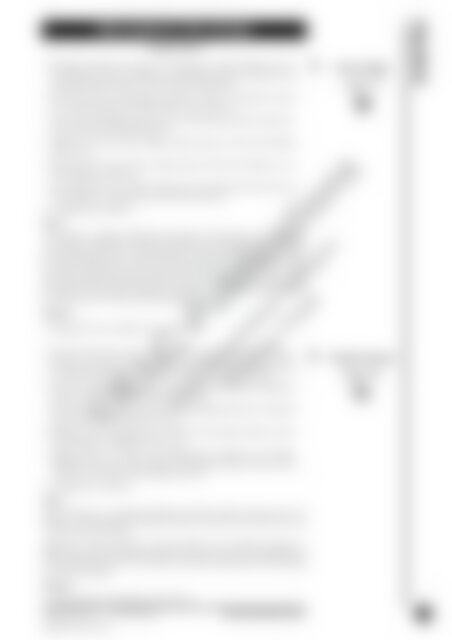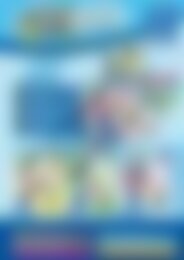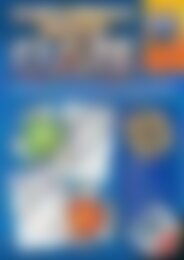RIC-0667 Aboriginal Cult 5-6
Create successful ePaper yourself
Turn your PDF publications into a flip-book with our unique Google optimized e-Paper software.
<strong>Aboriginal</strong> Life Today<br />
Teachers Notes<br />
• Read the information on page 12. It is important to make children aware of<br />
the difference between traditional <strong>Aboriginal</strong> people of long ago, and<br />
<strong>Aboriginal</strong> people of today. You can do this with pictures.<br />
• Inform the class that <strong>Aboriginal</strong> people have lived in Australia for many<br />
years. Talk about how they lived and ate, their shelter etc.<br />
• Ask ‘Do the <strong>Aboriginal</strong> people living in Australia today still live like this?’<br />
Accept all answers and discuss them.<br />
• Read the story about Ernie Dingo. Prompt students to share their feelings<br />
on the story.<br />
• You may wish to show them a taped session of The Great Outdoors to see<br />
Ernie Dingo on television.<br />
• On a large chart, have students brainstorm some physical characteristics of<br />
Ernie Dingo; for example, hair colour, skin colour etc.<br />
• Complete the worksheet.<br />
Story<br />
Ernie Dingo is a popular <strong>Aboriginal</strong> personality. He was born on 31 July 1956<br />
on a station in Western Australia. This station was called Bullardoo. Ernie also<br />
has an <strong>Aboriginal</strong> name. It is Oondamooroo. This name means ‘shield’. When<br />
he was a young boy, Ernie lived in a town called Mullewa, in Western Australia<br />
and went to school there. As he grew older, Ernie went to live in Perth. It was<br />
here that he became a performer. Ernie is married, and has two children. Ernie<br />
has made many movies and television programs. He is best known as one of<br />
the hosts of the TV show The Great Outdoors.<br />
Answers<br />
1. <strong>Aboriginal</strong>, station, shield, two, movies/films<br />
• Read the information sheet to the class. Discuss their feelings and responses.<br />
• Inform the class there are many different people from different cultures living<br />
in Australia today. Make a list of some of these cultures on the board.<br />
• If there are children in your class who have a different cultural background,<br />
they may wish to talk a little about their culture.<br />
• Inform the class there are also many <strong>Aboriginal</strong> people who live in Australia<br />
today. Ask the class if they know of any.<br />
• Read the story on Cathy Freeman to the class. Encourage students to share<br />
their feelings by retelling the story to you.<br />
• Display pictures of Cathy Freeman lighting the cauldron at the Sydney<br />
Olympics. Focus on her face and have the students brainstorm some of the<br />
emotions she may have been feeling at the time.<br />
• Complete the worksheet.<br />
Story<br />
Cathy Freeman is a popular <strong>Aboriginal</strong> Australian athlete. She was born at<br />
Mackay in Queensland in 1973 and still lives in Australia. Cathy has won many<br />
running races and trophies.<br />
Cathy won a gold medal for running the 400 m at the Sydney Olympics in<br />
2000. Cathy says her greatest moment was when she lit the big cauldron at<br />
the Opening Ceremony of the Olympics. She feels strongly about her <strong>Aboriginal</strong><br />
culture and heritage.<br />
Answers<br />
1. (a) No (b) Yes (c) Yes (d) No (e) No (f) Yes<br />
Ernie Dingo<br />
(page 17)<br />
Cathy Freeman<br />
(page 18)<br />
©R.I.C. Publications<br />
Low Resolution Images<br />
Display Copy<br />
In the Past<br />
www.ricgroup.com.au R.I.C. Publications 15Australian <strong>Aboriginal</strong> <strong>Cult</strong>ure 15<br />
ISBN 978-1-86311-807-1


